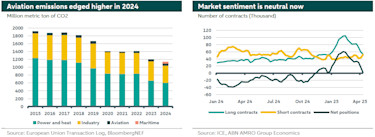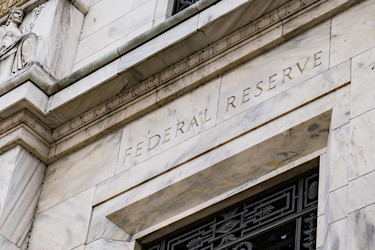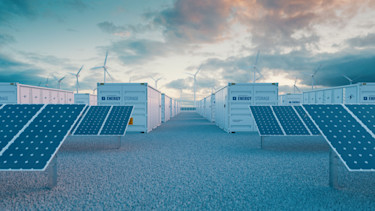Our research
Access all our publications and columns. Use the filters to easily find what content you are looking for.
Filters
All publications
1802 results
The Week Ahead - 15 - 19 December 2025
- Macro economy
-
These are the Key Macro Events for the upcoming week.

Carbon Market Strategist - Carbon prices heat up in 2026
- Sustainability
-
In this publication: A looming supply deficit in 2026 due to tightening emissions cap and reduced free allocations is a key driver of rising prices, with an expected supply reduction of around 180 million ton (YoY); Traders and funds are driving the bullish momentum with increased hedging and long contracts; Despite uncertainties around free allocation benchmarks and shipping allowances, tighter supply is expected to drive the upward trend in 2026; We see prices reaching 100 EUR/tCO2 by year end.

FOMC Watch – It’s time to slow down
- Macro economy
-
Consistent with consensus expectation and market pricing, the FOMC decided to lower the policy rate by 25 bps.

ESG Economist - How extreme weather events can make the transition more expensive
- Sustainability
-
In May of this year, the Network for Greening the Financial System (NGFS) published a quantification of a set of climate scenarios with a time horizon of 5 years. It was the first time that NGFS elaborated climate scenarios with a shorter time horizon. In this note, we select some useful findings from these NGFS scenarios.

ESG Economist - Reshaping gas, carbon, and power markets through the energy transition
- Natural resources
-
Renewables and reforms weaken the gas–carbon–power link, shifting price drivers to long-term factors like renewables, flexibility, and stricter emissions caps.

The Week Ahead - 8 - 12 December 2025
- Macro economy
-
These are the Key Macro Events for the upcoming week.

Transaction Trends - Black Friday eats into Sinterklaas purchases
- Macro economy
-
The Black Friday period is used by many Dutch people to make purchases, often with an eye on Sinterklaas and Christmas. During this period, consumers spend significantly more than in the past, when the days around Sinterklaas were still the main shopping days. To avoid peak pressure, more retailers are starting earlier in November with offering deals, primarily attracting customers through the internet.

China - November PMIs point to further slowdown
- Macro economy
-
November PMIs point to further weakening of growth momentum. Both manufacturing PMIs in contraction territory, divergence narrows. Services and composite PMIs also came down. More targeted support expected to safeguard GDP growth in 2026.

ESG Economist - Efficiency progress is a climate game changer
- Macro economy
-
In this analysis, we examine the trend in emission intensity based on greenhouse gases in the EU-27. Emissions intensity indicates the level of greenhouse gas emissions per unit of activity. Energy and emissions intensity are expected to continue to decline, provided that the EU does not relax its climate policy too much.

ESG Economist - Will the Netherlands meet the EPBD targets?
- Macro economy
-
In May 2024, the European Commission introduced the revised Energy Performance of Buildings Directive (EPBD), a significant regulation designed to improve the energy efficiency of buildings across the European Union (EU). The directive sets ambitious targets, including the goal of achieving a fully decarbonized building stock by 2050. In this note, we analyse the current state of the Dutch residential real estate sector and project whether the country is on track to meet the ambitious targets set by European regulations.
